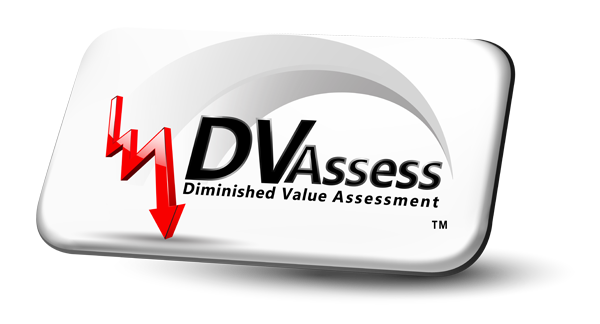Step by Step: Filing a Diminished Value Claim Successfully

Embarking on a diminished value claims journey can be overwhelming for many vehicle owners. It involves a series of steps that require careful attention and understanding of the insurance process.
This guide is designed to walk you through each stage, offering detailed insights and tips based on real-life examples. Our aim is to make this complex process more manageable and help you secure the compensation you deserve for the diminished value of your vehicle.
Step 1: Immediate Documentation Post-Accident
The immediate aftermath of an accident is critical for gathering evidence. Quick thinking and thorough documentation can greatly strengthen your claim. Start by taking clear photographs of the accident scene, including different angles of your vehicle’s damage, the positioning of vehicles, and any relevant road signs or markers. Also, gather contact information and statements from witnesses, as they can provide independent accounts of the accident.
In addition, jot down your own recollection of the event while it’s fresh in your memory. Note the time, weather conditions, and any other factors that may have contributed to the accident. This level of detail can be invaluable during the claim process. In one case, a claimant was able to use time-stamped photographs to establish the exact conditions at the time of the accident, which played a crucial role in substantiating their claim.
Step 2: Obtain the Police Report
The police report is an essential document in your diminished value claim. It provides an official and unbiased account of the accident, which is particularly important when establishing fault. Ensure you obtain a copy of this report as soon as possible. Review the report carefully to ensure all details are accurate and complete.
In cases where the police report is not immediately available, follow up diligently. A detailed report can serve as a key piece of evidence, especially in disputed claims.
For example: a claimant once used the police report to demonstrate the other party’s fault, which was initially contested by the insurance company. The report’s detailed account, including witness statements, helped resolve the dispute in the claimant’s favor.
Step 3: Professional Vehicle Appraisal
Getting a professional appraisal of your vehicle is a crucial step in determining its diminished value. Choose a reputable appraiser experienced in post-accident evaluations. The appraisal should provide a detailed comparison of your vehicle’s value before and after the accident. This report will be one of the key pieces of evidence in your claim.
In addition to obtaining an appraisal, consider getting a second opinion if the first appraisal seems inconclusive or significantly lower than expected. Having multiple professional opinions can provide a stronger foundation for your claim.
For instance: a car owner once challenged an initial low appraisal with a second, more comprehensive evaluation, leading to a significantly higher claim valuation.
Step 4: Review Your Insurance Policy
Understanding the specifics of your insurance policy is crucial for a diminished value claim. Policies vary greatly in terms of coverage for diminished value. Review your policy in detail or consider consulting with an insurance professional to understand the scope of your coverage. Look for specific clauses or exclusions that might impact your claim.
If your policy terms are not clear, or if there are any ambiguities regarding diminished value coverage, don’t hesitate to seek clarification from your insurance provider. A clear understanding of your policy will not only guide you in filing your claim but also help in setting realistic expectations regarding the outcome. In one notable case, a policyholder was able to uncover a previously overlooked clause that significantly increased their claim eligibility.
Step 5: Submitting Your Claim
When you’re ready to submit your claim, ensure that all your documentation is well-organized and complete. Include your professional appraisal, police report, photographs of the accident, witness statements, and a detailed account of the accident. A well-prepared claim submission can expedite the review process and improve your chances of a successful outcome.
It’s also important to provide a cover letter with your submission. This letter should summarize the key points of your claim, clearly stating the reasons for your diminished value claim and the amount you are seeking. An effectively written cover letter can provide a clear narrative for your claim, making it easier for the insurance adjuster to understand your case. In several successful claims, a well-crafted cover letter has made a significant difference in how the claim was perceived and handled by the insurance company.
Step 6: Negotiation and Settlement
Negotiating with the insurance company can be a challenging aspect of the claim process. Be prepared for initial settlement offers that may be lower than what you are seeking. Use the documentation and appraisals you have gathered to justify your claim amount. A rational and evidence-backed approach can be more persuasive in these negotiations.
During negotiations, patience and persistence are key. Don’t rush into accepting the first offer if it does not meet your expectations. It’s not uncommon for initial offers to be part of the negotiation process. In some cases, claimants have successfully negotiated much higher settlements by methodically presenting their evidence and standing firm on their claim amount.
Step 7: Seeking Professional Advice
If your claim becomes complex or if you’re not confident in handling negotiations, consider seeking professional advice. An experienced attorney or a claims specialist can provide valuable guidance and representation. They can help you navigate the intricacies of insurance policies and provide strategies for effective negotiation.
Professional advisors can also be invaluable in cases where there are legal complexities or specific state laws that impact your claim. Their expertise can help ensure that your rights are protected and that you receive a fair assessment of your claim. Many claimants have found that the investment in professional advice has paid off in terms of achieving a more favorable settlement.
Achieving a Fair Outcome
Filing a diminished value claim is a detailed process that demands attention to detail, patience, and persistence. By following these steps and using the guidance provided, you can enhance your chances of a successful outcome. Remember, this process is not just about recouping financial loss; it’s about asserting your rights as a vehicle owner and ensuring that you are fairly compensated for your vehicle’s diminished value.




